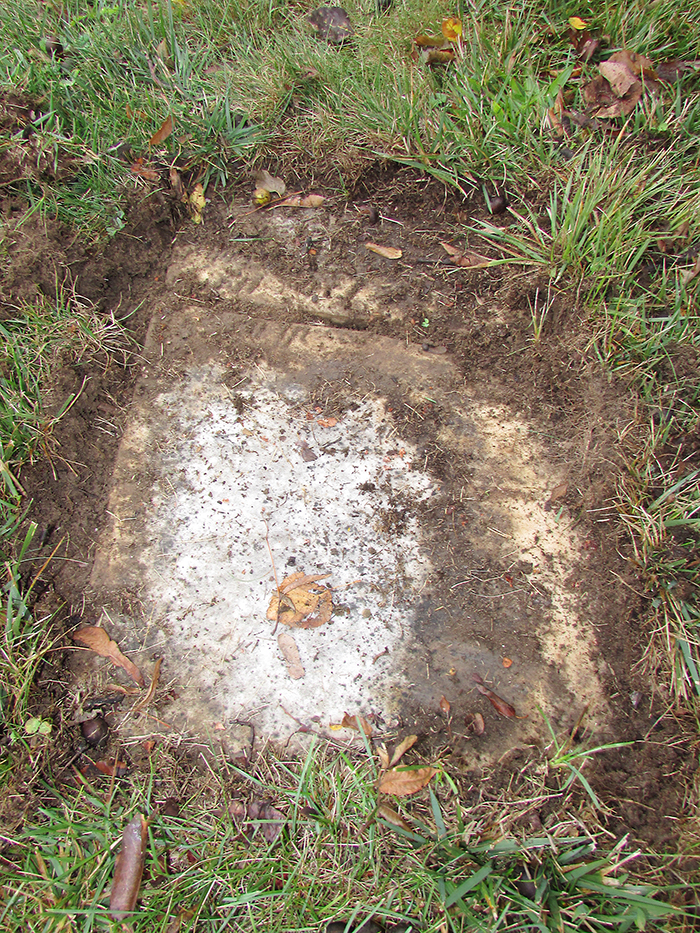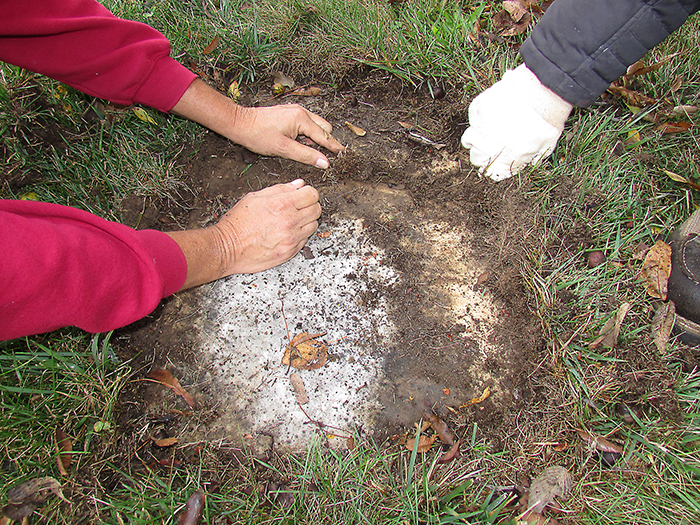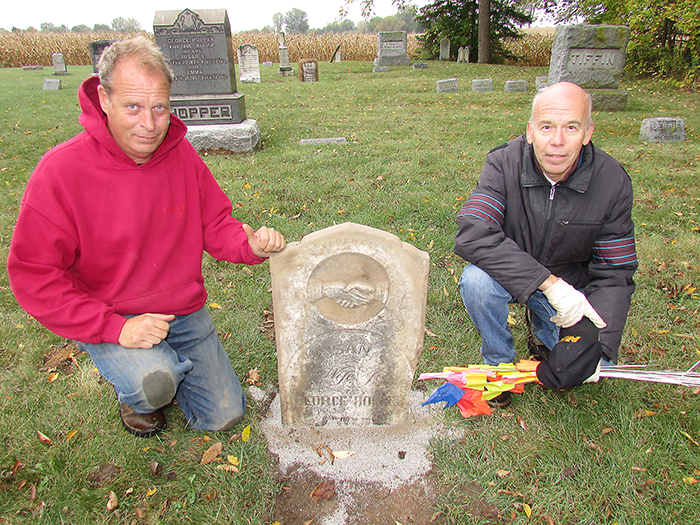
People who share a similar passion for preserving local history are hard at work in the cemeteries of Chatham-Kent this fall.
Catching up with Dr. Bruce Warwick, a retired dentist and active member of the Chatham-Kent Cemeteries Restoration Project, he was hard at work in the Dresden cemetery with Tom Klassen of Memorial Restorations.
Flagging various broken and buried headstones in an old part of the cemetery, Warwick said he has been working on and off for the past 30 years on restoration work, but “aggressively the last 10 years.”
Through Ontario Works and Goodwill programs, Warwick said he has made use of the pool of labourers available over the years to help with the restoration work.
“Several years ago, I got 25 kids from Goodwill who wanted something to put on their resumes,” Warwick said. “I still keep in touch with some of those kids.”
The restoration work is a partnership between the municipality, the volunteers and Klassen, whose company does the heavy lifting, literally, of the larger tombstones.
“There are stones that are sinking, broken or leaning, and ones that are safety issues,” Warwick said. “Many in this section are pre-1900s, and made primarily with white marble. Some of these have been underground for 70 years.”
For the ones that are buried underground, Klassen said you can sometimes dig down up to a foot and find the stones.
To make the detective work a little easier, Warwick said traditionally Christians are always buried with their head to the east, so if they find a stone on the west side, they know where to look.
Warwick, a fan of preserving history, said the work is important to not only the families of the deceased, but to the community.
“These people aren’t lost anymore. They were significant to somebody in their day,” Warwick noted.
The doctor gives credit for making the restoration work results available to the public to John Skakel, who started the website ckcemeteries.ca, which currently has more than 40,000 pictures of restored headstones on it.
Warwick said Skakel was a dedicated and inspiring member of the restoration group, and sadly, passed away last year of cancer.
“We miss him something terrible. He was as dedicated a volunteer as you can imagine,” Warwick said.

He added that Les Mancell is the historian in their volunteer group, that has about 25 members and “a half dozen who are really outstanding workers.”
With damage to the older stones, Warwick said a small percentage of the harm is done by vandals, and Mother Nature takes a small toll, but he said about 80 per cent of the damage done to the stones is from lawn mowers, which are large machines and not easy to manoeuvre.
Many years ago, it wasn’t uncommon for people to take headstones from the cemetery and use them as patio or sidewalk stones, Warwick said. That behaviour led to some graves being lost with no stone marker to show where the body was buried.
He said one story, which was part of the Cemetery Stroll in Chatham, is about the nephew of British poet, Lord Alfred Tennyson. Martin Tennyson lived in Dresden and is said to be buried there, but his headstone was stolen and used as a patio stone. Warwick said his sad story will be part of the Chatham cemetery stroll where his headstone is now located.
Klassen, owner of Memorial Restorations, does a lot of pro bono work for restoration groups, and travels all summer long doing work all over Ontario.
With as much passion for restoring history and headstones as the volunteer committee, Klassen said he enjoys working with Warwick and municipal staffers Jeff Bray and Collin Mardling.
Chatham-Kent CEO Don Shropshire said the municipality is pleased to have a good working relationship with staff and volunteers.
“We’re always happy when we are able to use municipal resources and personnel to help the dedicated members of the community preserve an important part of our heritage. Council has been very supportive and it’s always a win when we can work together,” Shropshire said.
Klassen agreed and said Bray and Mardling “are so on board with everything that Bruce suggests” and understand the need to do some maintenance not only for safety but for preservation.
“You can tell their heart is in it,” he added.

Klassen said they are at 123 headstones currently restored and will be looking at 150-175 this season in Chatham-Kent.
“That’s only the worst of them. Here in Dresden, we will be about a week doing the work,” Klassen noted.
Both men said the Chatham cemetery is one of the most interesting and diverse cemeteries they have worked on, with stones made of materials such as zinc, marble and hand-crafted materials. Klassen likened it to the Mount Pleasant cemetery in Toronto for its beauty and diversity of material and style used for headstones and monuments.
The first cemetery in Chatham was very large, according to Warwick, under the property now occupied by No Frills on the south side of Chatham. It was moved to the current location off Park Street.








Correction above by Dr. Warwick: Christian tradition is to bury a person with their head to the west and their feet to the east. The buried stones are often found at the head of a person [thus called headstones] under the ground, and found with long metal probes.
Buried such that, in the “Resurrection” they rise, facing East. Facing Jerusalem and facing the Eastern Gate.
[…] Preserving history one stone at a time, Chatham (Ontario) […]
[…] A number of volunteers are working to restore the headstones in the Dresden cemetery. […]